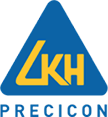Comparing Human Intelligence, Business Intelligence, and Artificial Intelligence in Industry 4.0
In the era of industry 4.0, technology is becoming increasingly necessary to enable businesses to enhance productivity and efficiency while creating value. This, however, requires a deep understanding of the differences between human intelligence (HI), business intelligence (BI), and artificial intelligence (AI) to ensure data security and privacy as we move into this new era of technology-driven innovation. Let’s break down each type of intelligence and discuss its strengths, weaknesses, applications, and values within the industry and for small-to-medium enterprises (SMEs).
Human Intelligence (HI):
Human intelligence refers to humans’ cognitive abilities, such as problem-solving skills, memory recall, language comprehension, creative thinking abilities, etc. Our brain powers HI, capable of learning new things quickly and adapting to changing conditions. The strengths of HI include its ability to make decisions based on experience or intuition and its capacity for creativity or imagination. However, some limitations need scalability or speed compared to AI and BI solutions.
Business Intelligence (BI):
Business intelligence is a set of techniques used to analyze data collected from various sources, such as customer surveys or sales reports, to gain insights that can help inform decision-making processes. For example, business intelligence tools provide companies with valuable customer information that can be used for marketing purposes or more strategic planning initiatives. The main strength of BI lies in its ability to transform raw data into actionable insights that can be easily understood by stakeholders across an organization. On the other hand, one potential limitation is the cost of implementing such systems, which can be prohibitive for smaller businesses or startups.
Artificial Intelligence (AI):
Artificial intelligence encompasses a wide range of technologies, from machine learning (ML) algorithms to natural language processing (NLP) systems designed to simulate human behaviour or automate complex tasks such as image recognition. AI has become increasingly popular due to its potential for scaling operations quickly by automating mundane tasks, thus freeing up resources for more critical organizational activities. However, one major drawback is its need for flexibility when dealing with unexpected situations since most AI systems are designed around pre-programmed rulesets incapable of learning from mistakes or adjusting their behaviours accordingly in novel scenarios.
AI has the potential to revolutionize many industries. However, some challenges are still associated with it, such as developing methods for dealing with ethical implications related to autonomous decision-making capabilities and ensuring privacy when collecting large amounts of personal data from consumers using AI-based systems.
Conclusion: As we enter into the era of industry 4.0, we must understand the differences between HI, BI, and AI so that businesses have access to the right set of tools needed for success while also ensuring data security and privacy remain a top priority throughout this transition period into a digital economy fueled by technology-driven innovation. By understanding each type’s strengths and weaknesses, we will be better equipped to find solutions tailored towards maximizing value creation while minimizing risks associated with using these powerful tools incorrectly or without proper oversight. Ultimately it will be up to us to ensure these technologies are utilized responsibly so they become forces for good rather than destruction within our society moving forward!
“It is not the strongest of the species that survives, nor the most intelligent that survives. It is the one that is the most adaptable to change.” – Charles Darwin
Written by Colin Koh, Senior Business Development Manager, Industry 4.0 Consultant. He is a technology evangelist, digital transformation specialist, and highly-respected figure in the ASEAN business community. Colin previously served as the President of the Singapore Industrial Automation Association (SIAA), is a certified IoT specialist and an MIT Sloan School of Management Executive program in Artificial Intelligence and Iot. Colin currently provides mentorship and advisory to companies implementing digital transformation towards Industry 4.0.
This Industry 4.0 Article Series is aimed to empower readers on everything they need to know about Industry 4.0 and its application to the technologies and benefits it can bring to companies and consumers.
Need help on your Industry 4.0 journey? Drop us an enquiry below.
